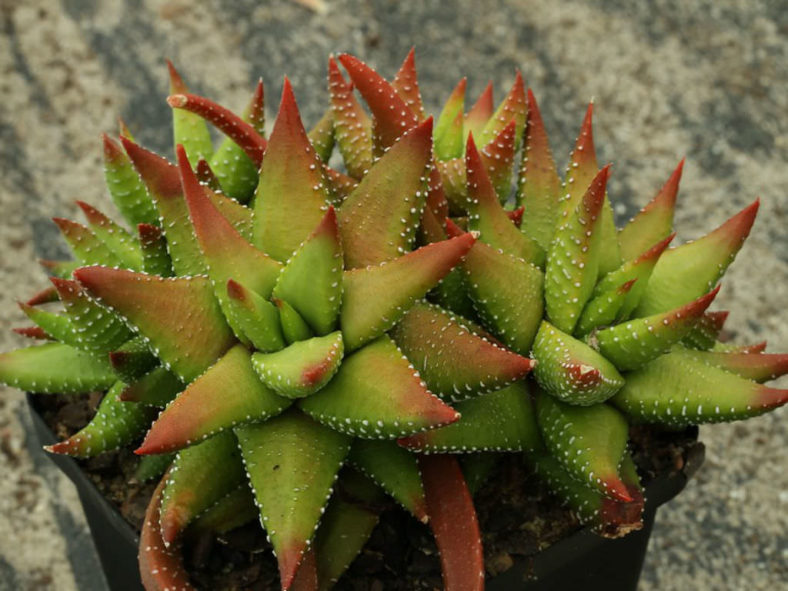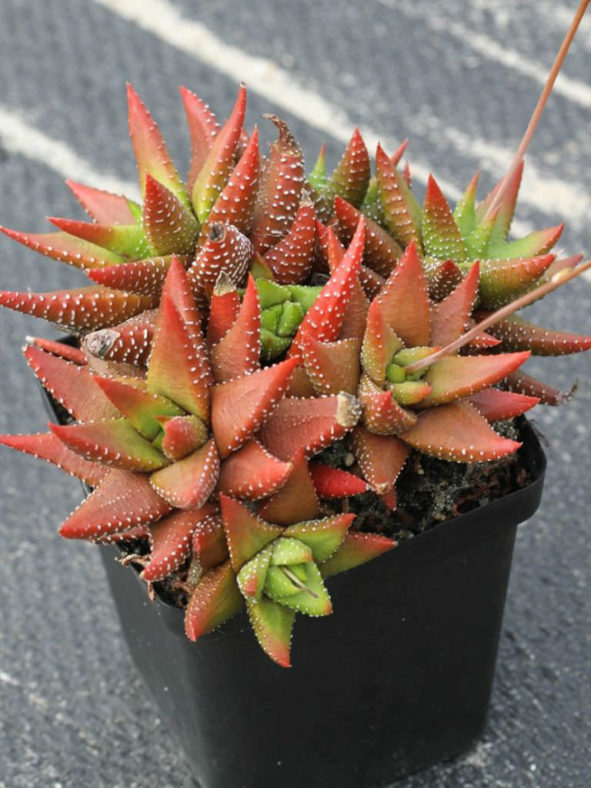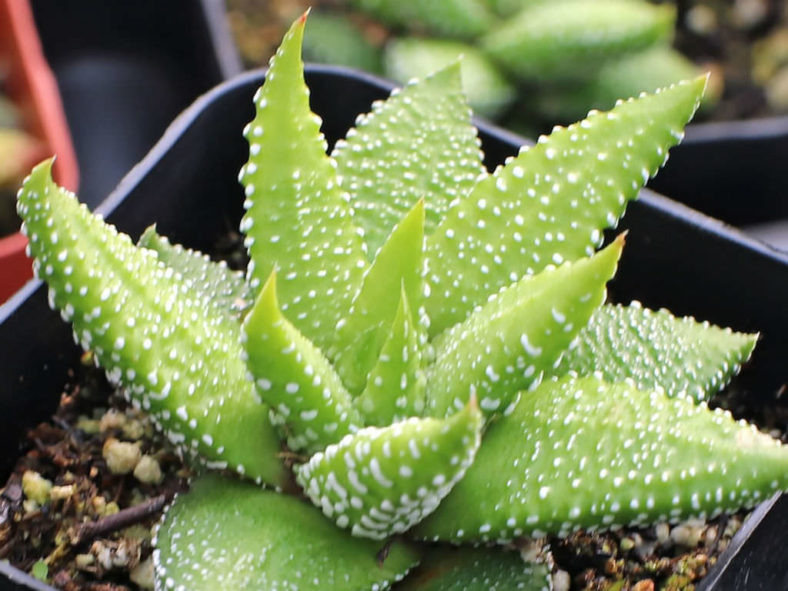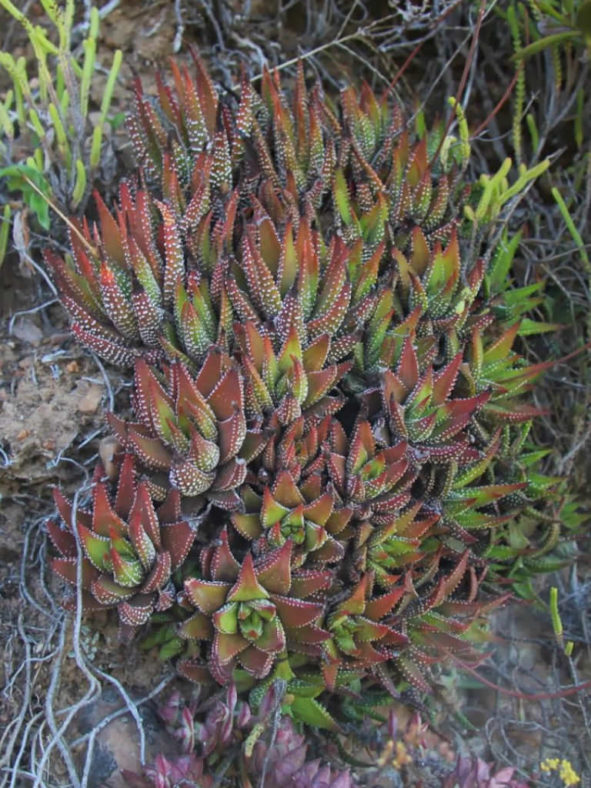Scientific Name
Haworthiopsis attenuata f. tanba
Accepted Scientific Name
Haworthiopsis attenuata (Haw.) G.D.Rowley
Synonym(s)
Haworthia attenuata 'Enon', Haworthiopsis attenuata 'Enon', Haworthia attenuata 'Tanba', Haworthiopsis attenuata 'Tanba', Haworthia tanba
Scientific Classification
Family: Asphodelaceae
Subfamily: Asphodeloideae
Tribe: Aloeae
Genus: Haworthiopsis
Etymology
The origin of the formal epithet "tanba" (pronounced TAN-ba) is unknown. It possibly refers to Tanba, a city in Hyōgo Prefecture in Japan, or derives from a Hindi word meaning "copper."
Origin
This succulent, named Haworthia tanba by Dr. Masahiko Hayashi, is a dwarf form of Haworthiopsis attenuata found near Enon, a small town in the Eastern Cape Province in South Africa. It is often sold as a cultivar of Haworthiopsis attenuata.
Description
Haworthiopsis attenuata f. tanba, also known as Haworthiopsis attenuata 'Enon' or Haworthia tanba, is a dwarf succulent that forms rosettes of short, fat, and firm leaves speckled with white, raised dots. The color of the leaves varies between green, yellow, and red tones depending on how much sunlight they get.

How to Grow and Care for Haworthiopsis attenuata f. tanba
Light: Although most species can tolerate full sun, these succulents thrive in semi-shaded positions. However, brighter light conditions are needed to bring out the leaf coloration.
Soil: Plant your Haworthiopsis in commercial soil formulated for succulents or make your own well-draining potting mix.
Hardiness: Haworthiopsis attenuata f. tanba can withstand temperatures as low as 30 to 50 °F (-1.1 to 10 °C), USDA hardiness zones 10a to 11b.
Watering: In spring and fall, when the growth is most active, water Haworthiopsis thoroughly, then wait until the top of the soil dries out before watering again. Water your plants less during the winter when their growth slows down significantly. During the hottest summer months, when Haworthiopsis are mostly dormant, water them just enough to keep the leaves from shriveling.
Fertilizing: Haworthiopsis are slow-growing succulents and do not require much fertilizer. Therefore, feed with a dilute fertilizer and only from spring to fall.
Repotting: When the plant has outgrown its container, repot in the spring or early summer into a new, slightly larger pot with fresh soil.
Propagation: Haworthiopsis are mostly and easily grown from stem cuttings or by removing offsets from the mother plant.
Learn more at How to Grow and Care for Haworthiopsis.
Toxicity of Haworthiopsis attenuata f. tanba
Haworthiopsis species are generally non-toxic to humans and animals.
Links
- Back to genus Haworthiopsis
- Succupedia: Browse succulents by Scientific Name, Common Name, Genus, Family, USDA Hardiness Zone, Origin, or cacti by Genus
Photo Gallery
Click on a photo to see a larger version.


